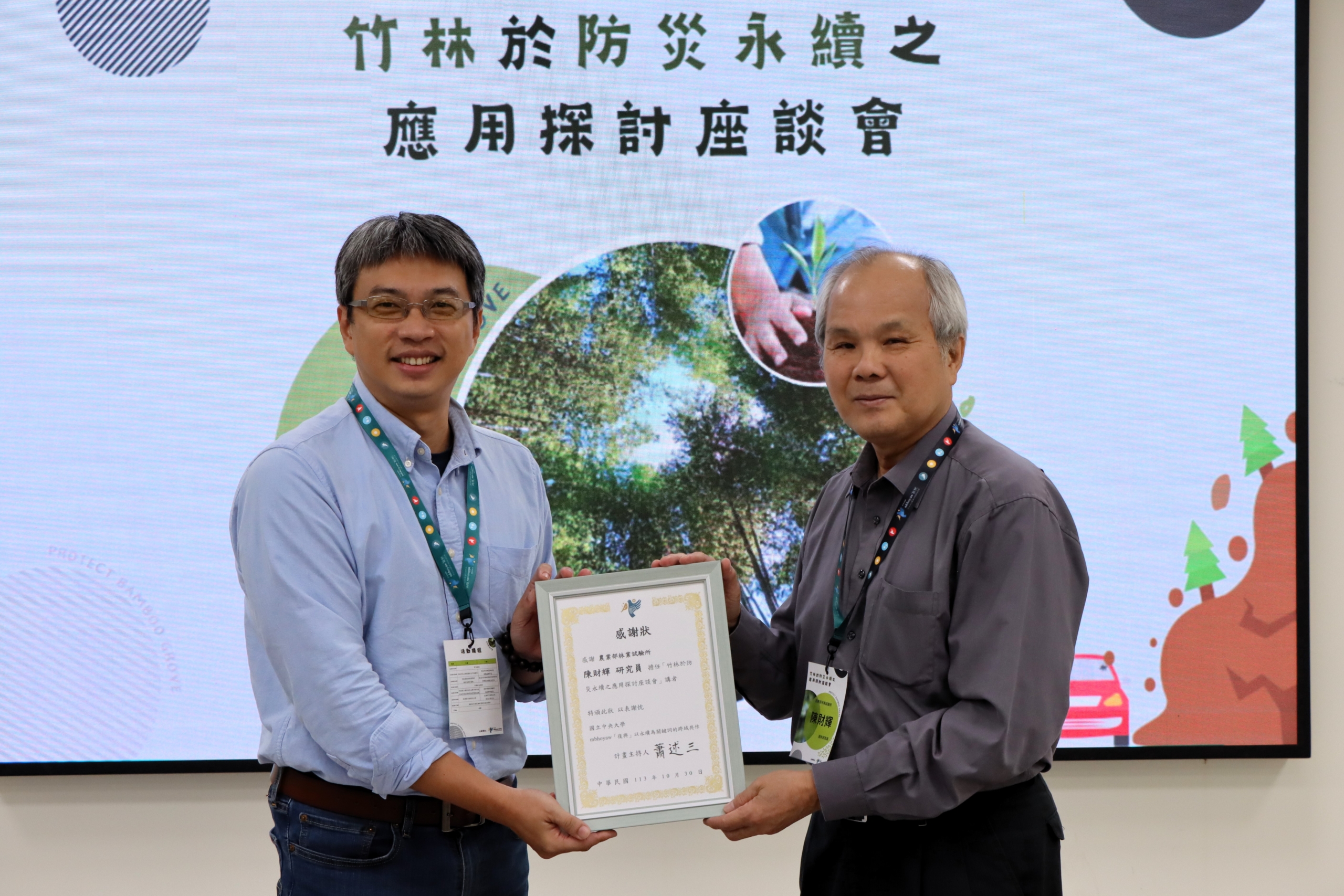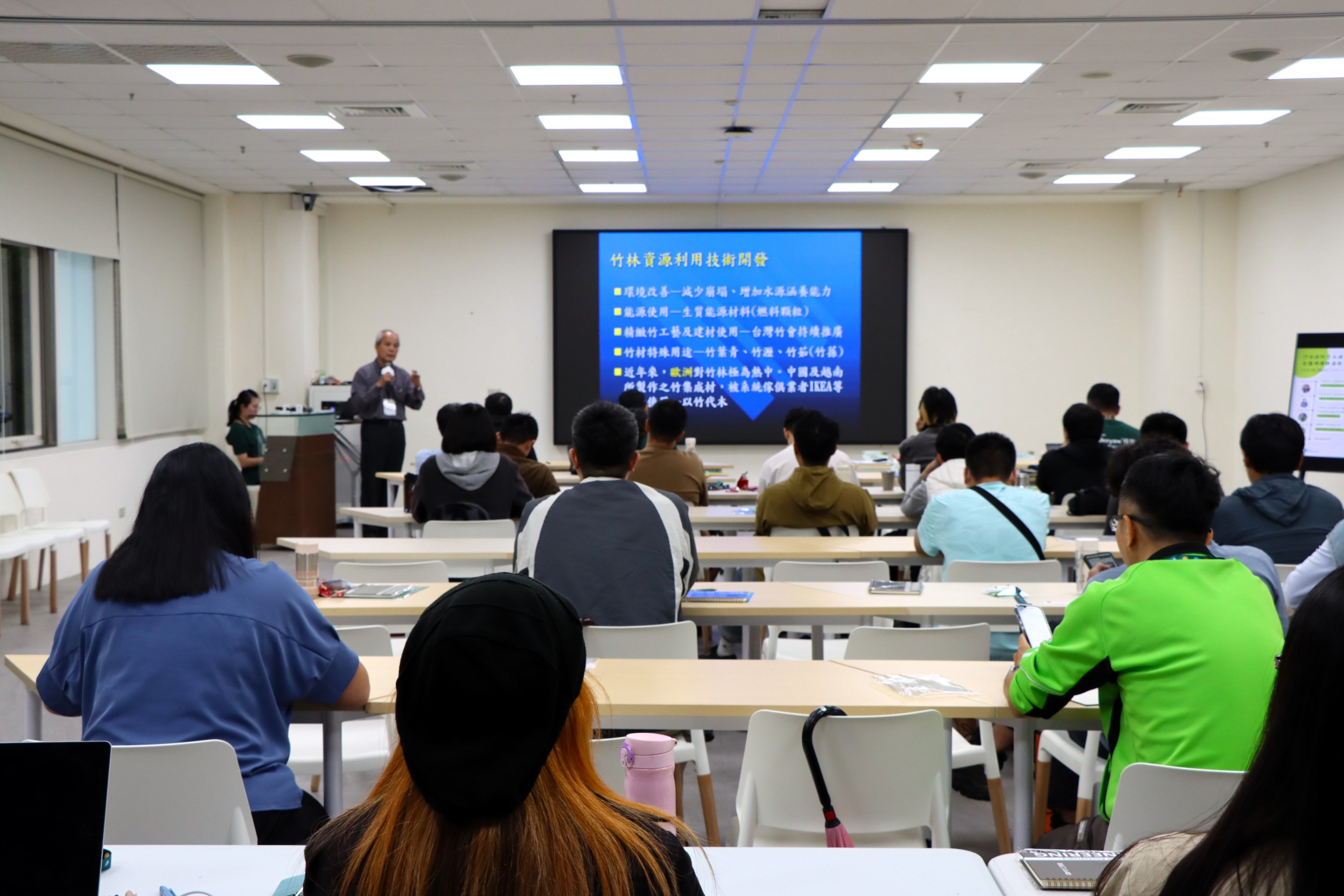Post-War Bamboo Research and Characteristics in Taiwan
Researcher Chen Tsai-Huei provided an academic perspective on the development of bamboo forest research in Taiwan. He noted that bamboo and betel nut have long been overlooked due to a lack of funding for research projects, only gaining attention in recent years. Chen emphasized bamboo’s value in disaster mitigation, particularly its rhizomes’ ability to prevent water-related damage. Bamboo’s applications can be categorized into three main areas: forestry (bamboo timber), agriculture (bamboo shoots), and land protection. Among these, bamboo shoots hold significant economic value, second only to cabbage in vegetable sales, though profits have declined in recent years. Despite limited research in the past, both academia and the government have actively promoted bamboo shoots.
Chen further explained the significant role bamboo played in early Taiwanese society, serving as materials for flat-bottomed bamboo rafts, windbreaks, and slope stabilization. He described four classifications of bamboo rhizomes in Taiwan: sympodial clumping rhizomes, monopodial running rhizomes with single-stem shoots, monopodial running rhizomes with clumped shoots, and running rhizomes with fused clumps. Bamboo primarily reproduces asexually, with sexual reproduction occurring only in rare instances, often marking the end of the plant’s life. Additionally, bamboo’s rapid growth (it can complete a growth cycle in about a month) gives it substantial carbon sequestration potential. Chen particularly highlighted makino bamboo (Phyllostachys makinoi), which thrives in poor soils with a depth of less than 30 centimeters. Known for its exceptional quality and elasticity, makino bamboo is even exported to Japan, showcasing its unique characteristics and economic value.
Are Bamboo Forests the Culprit Behind Mountain Landslides?
The second half of the presentation focused on debunking the myth that bamboo forests, due to their shallow root systems, are prone to causing landslides. Chen recalled that since beginning his bamboo research in 1984, he has closely followed this issue. He noted that the perception of bamboo forests as collapse-prone areas gained traction following Typhoons Mindulle and Nari, as well as landslides near Shimen Reservoir. During a meeting of the Executive Yuan’s Council for Economic Planning and Development, the Forestry Bureau was even advised to remove bamboo forests and replace them with deep-rooted tree species. However, the proposal encountered challenges because the shallow soils in mountainous areas are often unsuitable for the survival of deep-rooted trees, making the conversion from bamboo to tree forests unfeasible.
Chen further cited Japan as an example, where Japanese cedar forests (Cryptomeria japonica) also face landslide issues but are not labeled as “dangerous.” He argued that this discrepancy stems from a lack of understanding of bamboo’s characteristics. In reality, the primary causes of landslides in mountainous regions often involve geology, terrain, and rainfall, with contributing factors such as road excavation and riverbank erosion being more common triggers. Taiwan’s young geological features and complex topography exacerbate these risks, and poorly managed construction projects can lead to foundation erosion and landslides. Chen also mentioned that he once proposed inserting bamboo poles into slopes to prevent soil slippage, but the idea was dismissed due to skepticism from engineering departments about bamboo’s effectiveness.
The Duality and Potential of Bamboo
Chen humorously described bamboo as a “polarizing” plant, one that inspires either glowing praise or harsh criticism. He explained that removing bamboo forests can be straightforward in some cases, such as by clearing bamboo shoots, but more challenging in areas like the mudstone terrain of southern Taiwan, where thorny bamboo forests (Bambusa stenostachya) require significantly more effort. This region’s unique soil, a result of uplifted seabed terrain, is characterized by high salinity and unusual properties—it hardens excessively when dry and becomes unstable and prone to slippage when wet. Despite these challenges, Chen highlighted bamboo’s value as a protective forest species. It contributes to water conservation, mitigates flooding, and effectively reduces river flow velocity. However, he acknowledged that scientific research on bamboo’s ecological benefits remains insufficient. More empirical studies are needed to substantiate its potential for environmental conservation.
Speaker Chen Tsai-Huei (Researcher, Taiwan Forestry Research Institute)
Text by Deng, Jia-Yang
Editor by Li, Ruo-Jia
Photos by Li, Ruo-Jia




